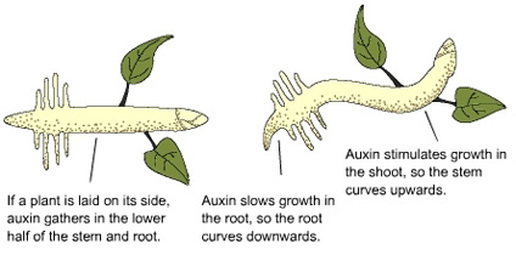Introduction
Tendrils and Auxins: Tendrils are specialized structures found in climbing plants that aid in climbing and anchoring to supports. The growth of tendrils around a support is facilitated by plant hormones known as auxins. Auxins are key regulators of plant growth and development, influencing processes such as cell elongation, differentiation, and tropisms.
1. Perception and Response to External Stimuli: When a climbing plant encounters a support structure, such as a trellis or another plant, it perceives the presence of the support through mechanical stimulation. This mechanical stimulus triggers a series of physiological responses mediated by auxins.
2. Differential Auxin Distribution: Upon perception of mechanical stimuli, auxin distribution within the plant undergoes a redistribution process. Auxins tend to accumulate on the side of the tendril facing away from the support, creating a gradient of auxin concentration across the tendril.
3. Promotion of Cell Elongation: The differential distribution of auxins leads to asymmetric growth responses in the cells of the tendril. Higher concentrations of auxins on the side facing away from the support promote cell elongation and expansion in that region, causing the tendril to curve towards the support.
4. Regulation of Gene Expression: Auxins modulate the expression of genes involved in cell elongation and tropic responses. They activate specific gene regulatory networks that control the synthesis of cell wall proteins, enzymes, and ion channels responsible for cell expansion and turgor-driven growth.
5. Activation of Signal Transduction Pathways: Auxins initiate signal transduction pathways that mediate cellular responses to external stimuli. They bind to auxin receptors located on the cell membrane, triggering a cascade of molecular events that ultimately lead to changes in gene expression and cellular processes.
6. Induction of Secondary Messengers: In addition to direct effects on gene expression, auxins also induce the production of secondary messengers, such as calcium ions and reactive oxygen species. These secondary messengers act as signaling molecules, amplifying the auxin signal and coordinating cellular responses to external stimuli.
7. Coordination of Tropic Responses: The growth of tendrils around a support is a classic example of a tropic response known as thigmotropism, where plants respond to mechanical stimuli by growing towards or away from the stimulus. Auxins play a central role in coordinating thigmotropic responses by regulating cell growth and curvature in response to mechanical cues.
Conclusion
Auxins play a crucial role in promoting the growth of tendrils around a support by regulating cell elongation, gene expression, and tropic responses. Through differential distribution and signaling pathways, auxins orchestrate the growth of tendrils towards supports, enabling climbing plants to efficiently anchor and climb. Understanding the mechanisms underlying auxin-mediated tendril growth provides insights into the fundamental processes of plant development and adaptation to environmental cues.

